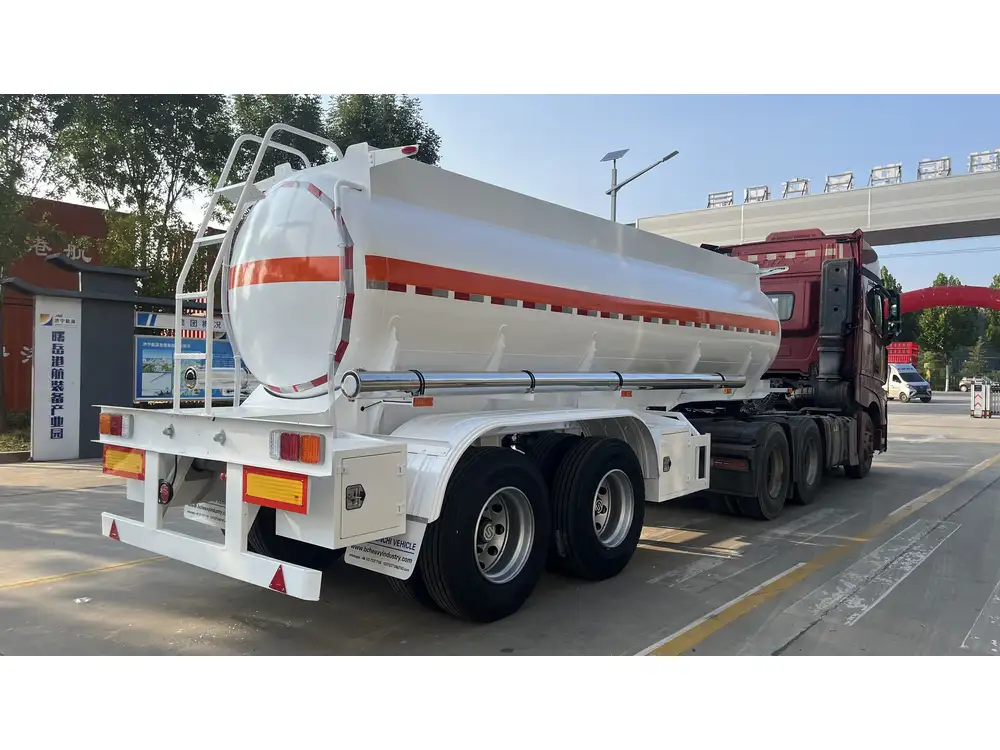Successfully unloading a Big Tex trailer requires knowledge of both the mechanics involved and the safety protocols necessary for effective operation. Understanding the nuances of this process can significantly enhance efficiency while minimizing potential hazards. In this guide, we will delve into the essential steps to dump a Big Tex trailer, highlighting best practices, safety measures, and common pitfalls to avoid.
Table of Contents
Understanding Your Big Tex Trailer
- 1.1 Specifications and Design Features
- 1.2 Preparing Your Trailer for Dumping
Essential Equipment and Tools
- 2.1 Hydraulic System Overview
- 2.2 Additional Tools for Safety and Efficiency
Step-by-Step Guide for Dumping a Big Tex Trailer
- 3.1 Pre-Dumping Preparations
- 3.2 The Actual Dumping Process
- 3.3 Post-Dumping Procedures
Best Practices for Dumping Safely and Effectively
- 4.1 Stabilization Techniques
- 4.2 Recognizing Load Flow Dynamics
Common Issues and Troubleshooting Tips
- 5.1 Hydraulic Failures
- 5.2 Load Distribution Problems
Conclusion: Mastering Your Big Tex Trailer
1. Understanding Your Big Tex Trailer

1.1 Specifications and Design Features
To adeptly navigate the dumping process, it’s critical first to understand the technical specifications of your Big Tex trailer. Common models feature a robust structural design conducive to carrying significant payloads while offering a hydraulic lift system for efficient unloading. Knowing the dimensions, weight capacity, and unique attributes of your trailer ensures that you operate within its limits, thus preventing mechanical failures or accidents.
1.2 Preparing Your Trailer for Dumping
Before you begin the dumping process, ensure that your trailer is properly prepared:
- Inspect the Hydraulic System: Check for leaks, pressure levels, and operational status.
- Load Distribution: Verify that the load is evenly distributed to prevent tipping during the dumping process.
- Secure the Area: Clear the vicinity of any obstacles, ensuring a safe dumping zone.
2. Essential Equipment and Tools

2.1 Hydraulic System Overview
Most Big Tex trailers employ a hydraulic system to facilitate the dumping process. Understand the following components:
| Component | Function |
|---|---|
| Hydraulic Pump | Generates hydraulic pressure |
| Lift Cylinders | Raises the trailer bed |
| Control Valves | Regulates fluid flow |
Familiarize yourself with how each of these elements functions to diagnose potential issues quickly.
2.2 Additional Tools for Safety and Efficiency
In addition to the built-in hydraulic system, the following tools may enhance your dumping process:
- Chocks: Prevent movement during the unloading phase.
- Gloves: Protect your hands while handling equipment.
- Reflective Safety Gear: Ensure visibility in low-light conditions.
3. Step-by-Step Guide for Dumping a Big Tex Trailer

3.1 Pre-Dumping Preparations
Prior to dumping:
- Positioning: Find a level surface free from obstructions.
- Safety Gear: Equip yourself with necessary safety equipment.
- Engage Brakes: Ensure that the trailer’s braking system is activated to prevent rolling.
3.2 The Actual Dumping Process
Step-by-Step Instructions:
- Start the Truck: Ensure the truck engine is running, as it powers the hydraulic system.
- Activate the Hydraulic System: Engage the control valve to initiate the hydraulic lift.
- Gradually Raise the Bed: Allow the bed to lift steadily; do not jerk or release pressure suddenly to avoid accidents.
- Monitor the Load: Keep an eye on the load as it begins to shift and slide to prevent sudden, uncontrolled dumping.
- Lower the Bed: Once the load has been fully released, lower the trailer bed gradually.

3.3 Post-Dumping Procedures
After dumping, follow these steps:
- Inspect for Damage: Examine both the trailer and the hydraulic system for signs of wear or damage.
- Disconnect Power: Turn off the hydraulic system to avoid inadvertent operations.
- Store Equipment: Secure tools and safety gear properly to prevent accidents.
4. Best Practices for Dumping Safely and Effectively
4.1 Stabilization Techniques
For enhanced stability during the dumping process, consider the following methods:
- Use Stabilizers: Extendable stabilizers can provide additional support for the trailer.
- Evaluate Load Stability: Check for any shifting before commencing with the dump to minimize risks.

4.2 Recognizing Load Flow Dynamics
Understanding load dynamics is pivotal:
- Weight Transfer: Recognize how the center of gravity shifts during the dumping process.
- Controlled Release: Aim for a gradual release of the load to prevent sudden changes in weight distribution.
5. Common Issues and Troubleshooting Tips
5.1 Hydraulic Failures
Hydraulic failures can occur, leading to potential accidents. Here’s how to troubleshoot:
- Low Fluid Levels: Regularly check hydraulic fluid levels. Refill as necessary.
- Leaks: Inspect hoses and connections for any signs of hydraulic fluid leakage.

5.2 Load Distribution Problems
Improper load distribution can lead to tipping:
- Assess Weight Placement: Always place heavier materials towards the front of the trailer.
- Adjust Loads: Regularly adjust loads to ensure even weight distribution before dumping.
6. Conclusion: Mastering Your Big Tex Trailer
Dumping a Big Tex trailer may initially seem like a daunting task, but with the right understanding, preparation, and adherence to safety measures, it becomes an efficient and manageable process. By following this comprehensive guide, you’ll not only ensure a smooth dumping experience but also extend the lifespan of your trailer and its hydraulic system. Staying informed and vigilant will enable you to master your equipment, leading to improved efficiency and safety in your operations.
By keeping these vital practices in mind, we can optimally utilize our Big Tex trailers. 올바른를 보장하기 위해 필수 및 선의와 연결을 보장하든지 할 수 있습니다. A focus on precision will enable you to overcome challenges and ensure that you are getting the best performance from your trailer every time.
Bonus Tips for Trailers
- Regular Maintenance: Schedule regular maintenance to ensure the hydraulic system functions flawlessly and that the body of the trailer remains free from any undue wear.
- Training: Invest in proper training for the personnel who handle the trailers. Understanding the machinery significantly reduces the risk of accidents.
With this guidance at hand, moving forward with confidence in the expertise of operating a Big Tex trailer is within reach.



